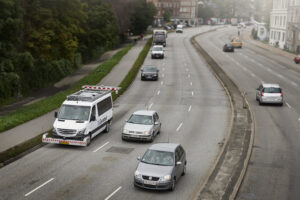The Multi Functional Vehicle (MFV) using the Dynatest Explorer (DE) software
Dynatest Explorer (DE) is a comprehensive pavement analysis program that can provide the user with a complete overview of the pavement condition.
Dynatest Explorer is primarily used to evaluate the functional pavement condition with data from Dynatest Road Surface Profilers (RSP) or LCMS®.
DE gives you access to all the data, images and distresses acquired during the survey, allowing for visualization, verification, reviewing and reporting of results. Dynatest Explorer provides a long range of export options, including export of distresses to Microsoft Excel and Google Earth. Dynatest Explorer is a Desktop Application, that runs on Microsoft Windows 7,10 and 11 (64-bit).
Distress Rating Module (DRM)
For equipment with a Pavemetrics® Laser Crack Measurement System (LCMS®), the Distress Rating Module (DRM) in Dynatest Explorer can be used for both the automated and manual analysis of 3D and 2D pavement images, while simultaneously being able to see Right of Way (ROW) images and map location.
The Distress Rating Module uses the images from the LCMS® sensors and the distresses identified in the LCMS® data processing will automatically be added to the distress table. Using the tools provided in the Distress Rating Module it is possible to manually identify and classify distresses that may not have been detected in the automatic processing, while also being able to measure and edit the detected distresses.
